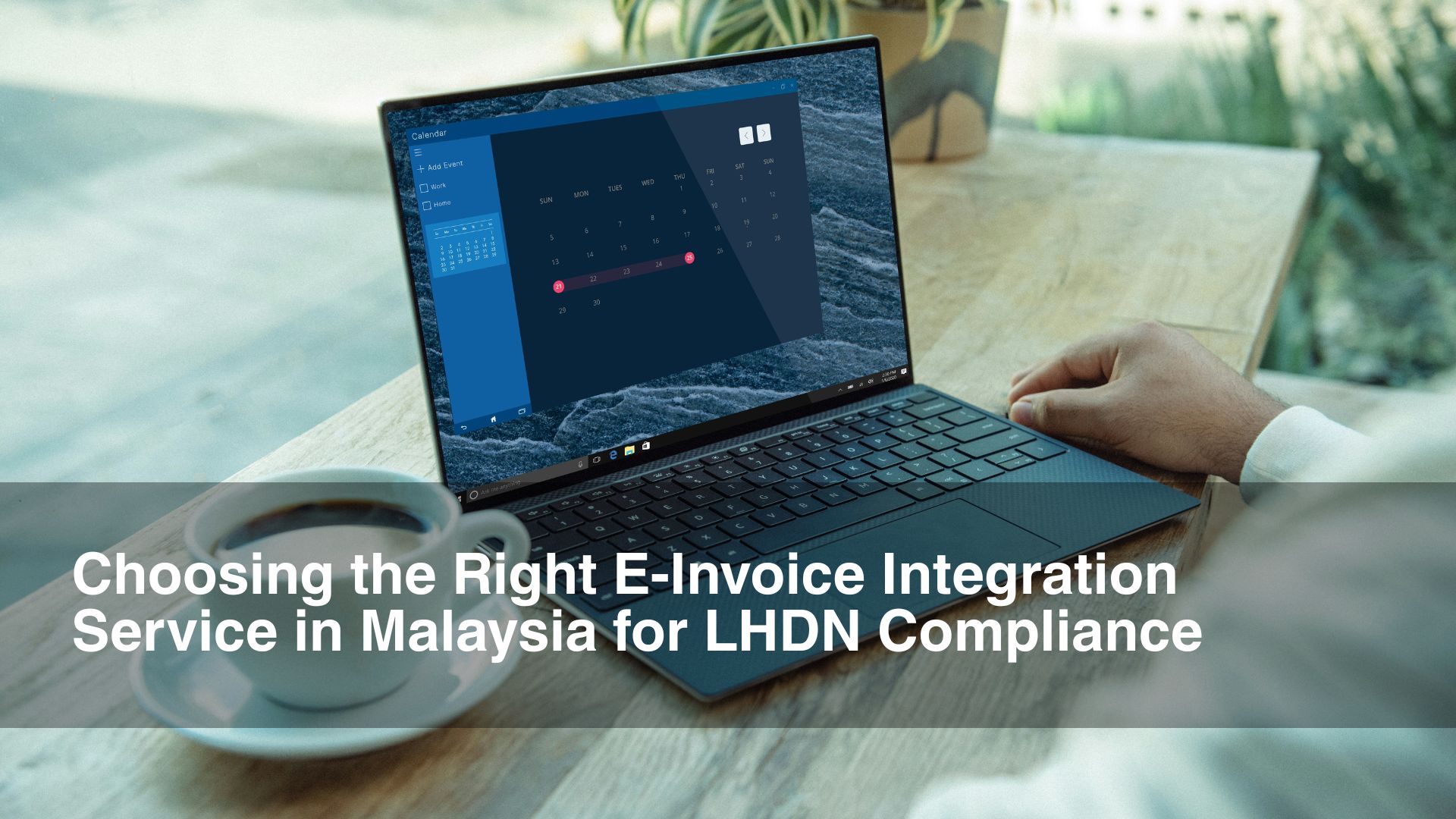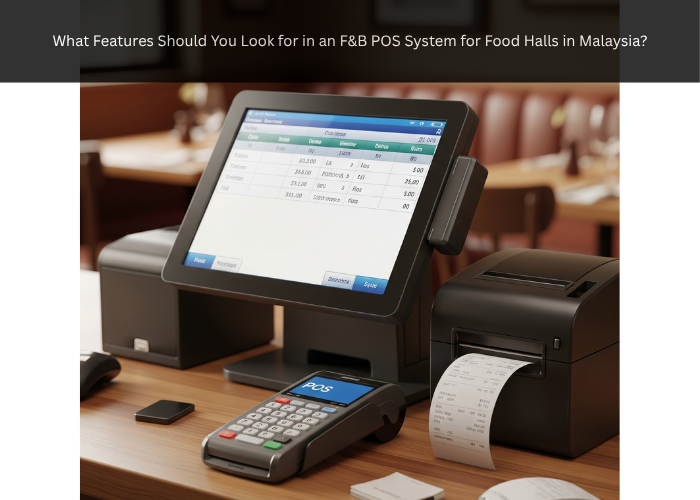Understanding E-Invoice ERP Integration Malaysia
In the rapidly evolving landscape of digital finance, e-invoice ERP integration Malaysia has emerged as a pivotal component within the Malaysian marketplace. As businesses strive to comply with the e-invoicing mandates set forth by the Lembaga Hasil Dalam Negeri Malaysia (LHDN), the incorporation of e-invoice integration services becomes increasingly significant. This integration ensures that organizations can seamlessly manage their invoicing processes while adhering to current regulatory requirements.
E-invoicing, by definition, refers to the electronic generation, transmission, and processing of invoices. This digitization is more than a mere replacement of paper invoices; it introduces efficiencies and accuracy that manual processes simply cannot match. The integration of e-invoices with an Enterprise Resource Planning (ERP) system is a strategic approach to enhancing business operations. An ERP system centralizes data management, making it easier for companies to synchronize their financial information, inventory management, and client interactions.
Utilizing an e-invoice integration service in Malaysia not only streamlines workflows but also helps in maintaining meticulous records that are readily accessible for audits and compliance checks. The significance of this integration cannot be overstated; it allows organizations to automate their invoicing processes, which leads to reduced administrative costs and improved cash flow management. Moreover, with LHDN’s increasing emphasis on digital compliance, businesses that leverage robust e-invoice ERP integration services will find themselves better positioned to meet these evolving standards.
In summary, understanding the nuances of e-invoice ERP integration is essential for Malaysian businesses navigating the complexities of digital invoicing. By recognizing the importance of selecting the right e-invoice integration service, organizations can enhance their operational efficiency while ensuring full compliance with LHDN regulations.
Importance of LHDN Compliance for E-Invoice
In Malaysia, adherence to the guidelines set forth by Lembaga Hasil Dalam Negeri (LHDN) is crucial for companies that wish to operate seamlessly within the regulatory framework. Compliance with LHDN regulations impacts a range of business activities, especially concerning taxation and e-invoicing processes. Non-compliance can result in severe penalties, including fines and the possibility of audits, which can disrupt business operations and tarnish a company’s reputation. Therefore, ensuring that one’s business practices align with LHDN’s requirements is imperative for long-term sustainability.
One of the primary benefits of complying with LHDN is the facilitation of smoother business operations. E-invoicing, supported by an efficient e-invoice integration service in Malaysia, simplifies the invoicing process and enhances transparency. This integration not only fosters accurate record-keeping but also ensures that businesses can provide necessary documentation to LHDN when required. Furthermore, leveraging a comprehensive e-invoice ERP integration allows companies to maintain real-time transaction records, minimizing discrepancies that could raise flags during audits.
Additionally, complying with LHDN regulations can create competitive advantages. Businesses that systematically integrate e-invoice systems demonstrate reliability and professionalism, which can foster customer trust and stimulate growth. By utilizing an effective e-invoice integration service in Malaysia, companies enhance their operational efficacy and position themselves favorably within the marketplace. As the economy increasingly embraces digital transformation, businesses that prioritize LHDN compliance through robust e-invoicing practices will not only avert penalties but also solidify their market presence. By investing in comprehensive compliance strategies, organizations can pave the way for future success, ensuring that they meet both local and international business standards.
Key Features to Look for in E-Invoice
When selecting an e-invoice integration service in Malaysia, businesses must consider several critical features that directly impact their compliance with the Lembaga Hasil Dalam Negeri (LHDN). One of the foremost aspects is the connectivity options provided by the service. A robust e-invoice integration service will ensure seamless interactions with various stakeholders, including suppliers, clients, and the tax authority itself. This connectivity is crucial for maintaining accurate transaction records and ensuring timely submissions to LHDN.
Compatibility with existing Enterprise Resource Planning (ERP) systems is another essential feature. Businesses often utilize specific ERP solutions for their operations, and a successful e-invoice integration service must align with these systems to facilitate smooth data transfer and reduce manual interventions. Ensuring that the selected service can accurately integrate with existing software minimizes disruptions and enhances operational efficiency, which is vital for maintaining compliance with tax regulations.
Automation capabilities play a significant role in simplifying invoicing processes. Automated e-invoice integration services can streamline the generation, dispatch, and tracking of invoices, which reduces human error and ensures timely submissions. This functionality is particularly beneficial for meeting LHDN requirements as it aids in maintaining an organized record-keeping system and enhances overall compliance monitoring.
Lastly, user-friendliness should not be overlooked. A service that offers an intuitive interface and simplifies the user experience encourages staff to adopt the new processes with ease. Features such as straightforward navigation, clear reporting tools, and accessible support resources greatly enhance the effectiveness of an e-invoice integration service in Malaysia. By focusing on these features, businesses can select a provider that will not only support LHDN compliance but also improve their overall invoicing efficiency.
Evaluating Providers of E-Invoice ERP Integration Malaysia
When selecting an e-invoice integration service in Malaysia, particularly for compliance with LHDN regulations, it is imperative to thoroughly evaluate potential providers. One of the first factors to consider is the provider’s reputation within the market. Reputable providers often have established their credibility through years of service, garnering trust from both peers and clients. A company with a strong reputation is more likely to deliver a reliable service that meets the needs of businesses in Malaysia.
Customer reviews are another critical component in the evaluation process. They provide insights into the experiences of other users with the e-invoice integration service. Look for feedback regarding the functionality of the system, ease of integration with existing ERP systems, and user satisfaction. Additionally, assess the presence of negative reviews, which can highlight potential issues or limitations of the service.
Examining case studies of successful integrations can also offer valuable information. Many providers showcase success stories that detail how their solutions have positively impacted other organizations. Assess these case studies for metrics such as improved efficiency, cost savings, or enhanced compliance with Malaysian regulations. The more evidence a provider can give about their integration success, the more confidently you can assess their competence in handling your e-invoice requirements.
The level of customer support provided is equally important. In the rapidly changing landscape of e-invoicing, having timely and effective support can significantly enhance your experience. Evaluate the availability of customer support, response times, and the depth of assistance offered. Providers that offer comprehensive training resources and ongoing support are often better equipped to ensure a smooth integration process. Conducting thorough due diligence by focusing on these factors will assist in making an informed decision when choosing an e-invoice integration service in Malaysia.
Cost Considerations for E-Invoice ERP
When selecting an e-invoice integration service in Malaysia, understanding the associated costs is crucial for effective budgeting and long-term financial planning. Various pricing models exist, and each has its advantages and drawbacks. The two primary models are subscription-based services and one-time fees. Subscription models typically involve monthly or annual payments, which can make initial budgeting easier as costs are predictable. This model may also provide continuous updates and support, ensuring that businesses stay compliant with LHDN regulations without incurring additional charges for updates or system maintenance.
On the other hand, one-time fee models often represent a higher upfront cost. However, once the payment is made, there are no ongoing expenses required for the software. For companies with sufficient capital that prefer a long-term investment strategy, this could prove to be more economical over time. Comparing these options involves evaluating not just the initial costs but also the potential savings from maintaining compliance with LHDN guidelines, which could help avoid penalties and fines related to improper invoicing.
Furthermore, businesses should consider the value proposition of the e-invoice integration service in Malaysia. While cost is a significant factor, it must be weighed against features offered, including user support, scalability for future needs, and integration ease with existing ERP systems. Long-term savings from increased efficiency, reduced errors in invoicing, and enhanced compliance could ultimately justify a higher initial investment. Therefore, a comprehensive analysis of both direct and indirect costs associated with e-invoice integration services is vital. This strategic budgeting approach ensures organizations make informed decisions that align with their financial objectives and compliance needs.
Integrating E-Invoices: Technical Requirements and Considerations Malaysia
In Malaysia, businesses that aim to achieve compliance with the LHDN’s e-invoicing initiatives must carefully consider the technical requirements surrounding e-invoice integration services. The successful implementation of an e-invoice integration service in Malaysia necessitates both appropriate software and hardware capabilities that align with the company’s existing infrastructure.
First and foremost, businesses will need to invest in compatible ERP systems that facilitate e-invoice generation and reporting. These systems should be able to communicate with external platforms used for tax submissions. An ideal software solution would incorporate features such as real-time data processing, automatic invoice generation, and the capability to accommodate various formats required by regulatory bodies. Moreover, ensuring that your software supports integration with other business applications can streamline operations and enhance overall efficiency.
Hardware considerations are equally important. Adequate server capacity, reliable internet connectivity, and the necessary network infrastructure must be in place to support frequent data transfers and to handle the volume of transactions generated. The choice of servers or cloud services should ensure high availability and scalability, catering to the growth of business operations.
Data security protocols are crucial in the e-invoicing landscape. Businesses must implement robust security measures, such as encryption, secure data transfer protocols, and access controls, to protect sensitive information from breaches or unauthorized access. Compliance with data protection regulations is non-negotiable, and having a comprehensive security plan is essential for safe operation.
Seamless integration with existing IT frameworks is another critical aspect. This may involve working with IT specialists to map out workflows, configure systems, and migrate data without causing disruptions. By taking into account these technical requirements and considerations, businesses can ease the transition to an effective e-invoice integration service in Malaysia that meets LHDN compliance standards.
Support and Training from E-Invoice
When selecting an e-invoice integration service in Malaysia, an essential aspect to consider is the support and training provided by the service provider. Implementing an e-invoicing system significantly alters the workflow within organizations, necessitating comprehensive training programs to ensure employees can adapt effectively. Various modalities are available, including online training modules and in-person sessions, each catering to different organizational needs.
Online training offers flexibility, allowing employees to engage with content at their own pace. This approach may include on-demand video tutorials, webinars, and interactive e-learning platforms. Such resources can be beneficial for those who may find it challenging to allocate time for scheduled training sessions. Alternatively, in-person training provides a hands-on experience, where employees can directly ask questions and receive real-time feedback from expert trainers. This personalized interaction is often highly effective for immediate troubleshooting and clarifying complex concepts within the e-invoice integration service.
Ongoing support is equally critical in the evolving landscape of digital invoicing. E-invoice integration service providers in Malaysia typically offer various levels of support, from basic assistance to dedicated account managers. This ongoing relationship helps organizations address challenges as they arise, ensuring minimal disruption to operations. Accessibility to a robust support network can also facilitate updates, maintenance procedures, and compliance adaptations necessary for LHDN regulations.
Moreover, proper training and support empower employees, fostering confidence in utilizing the new digital systems. Employees who are adequately equipped are more likely to take advantage of the features offered by the e-invoice integration service, leading to enhanced productivity and improved operational efficiency. Collectively, these factors underscore the importance of prioritizing support and training when choosing an e-invoice integration service in Malaysia, enhancing an organization’s ability to thrive amid digital transformation.
Common Challenges and Solutions in E-Invoice ERP Integration Malaysia
The integration of e-invoicing solutions within Enterprise Resource Planning (ERP) systems presents several challenges for businesses in Malaysia. One prominent issue faced is the compatibility of existing systems with new e-invoicing solutions. Many legacy systems were not designed with modern e-invoicing functionalities in mind, leading to potential performance issues or data loss during the migration process. Consequently, organizations may find it difficult to seamlessly integrate e-invoice integration service Malaysia with their current ERP frameworks.
To address this challenge, companies should conduct a thorough assessment of their existing ERP systems prior to integration. This assessment should include mapping out current workflows and identifying potential gaps where the e-invoice integration could be implemented. Collaborating closely with technology providers that specialize in e-invoice integration services can also help identify necessary modifications to ensure compatibility and streamline integration.
Another common challenge is compliance with the guidelines set forth by the Malaysian Inland Revenue Board (LHDN). Staying updated with changing regulations can be cumbersome, and integrating e-invoicing solutions that meet compliance requirements may prove to be challenging for many businesses. Regular monitoring of regulatory changes, along with proactive training sessions for staff, can significantly mitigate this risk.
Moreover, user resistance can emerge when employees are accustomed to traditional invoicing methods. This resistance can hinder the effectiveness of the e-invoicing process. Thus, it is crucial to provide comprehensive training and support, emphasizing the benefits of e-invoicing, such as increased accuracy and efficiency. Incorporating feedback loops to address employee concerns can further enhance the integration process.
By staying aware of these challenges and implementing targeted solutions, businesses in Malaysia can successfully integrate e-invoice services within their ERP systems, paving the way for improved compliance and operational efficiency.
Future Outlook for E-Invoice ERP Integratio Malaysia
The landscape of e-invoice ERP integration service Malaysia is evolving rapidly as businesses and regulatory bodies respond to emerging technologies and compliance demands. As Malaysia continues to enhance its digital economy, e-invoicing is becoming a standard practice for efficient financial management. Upcoming trends indicate that businesses will increasingly adopt advanced e-invoice integration services to streamline operations and ensure adherence to guidelines set by the Inland Revenue Board of Malaysia (LHDN).
One significant trend on the horizon is the integration of artificial intelligence (AI) and machine learning within e-invoice systems. These technologies can automate data validation, enhance accuracy, and expedite reconciliation processes, ultimately reducing manual efforts and errors. By adopting AI-driven e-invoice integration services, businesses can enhance visibility into their financial transactions, leading to improved decision-making and compliance with LHDN regulations.
Another critical aspect shaping the future of this integration is the anticipated expansion of regulatory frameworks surrounding e-invoicing. As more businesses implement electronic invoicing to meet compliance requirements, authorities are likely to introduce comprehensive policies to standardize practices. Organizations must stay informed about these legislative changes and proactively adapt their e-invoice ERP systems to remain compliant and competitive.
Furthermore, the rise of blockchain technology presents an opportunity for enhanced security and transparency in e-invoicing. By utilizing a distributed ledger, companies can ensure the integrity of their transactions, making it easier to forge trust and enhance traceability. It is essential for businesses to embrace these technological advancements and consider partnering with reputable e-invoice integration service providers to navigate this evolving landscape successfully.
In summary, the future of e-invoice ERP integration services in Malaysia is poised for significant growth and transformation. By leveraging innovative technologies and remaining vigilant about regulatory changes, businesses can successfully align themselves with the dynamic requirements of the market and ensure compliance with LHDN’s directives.









